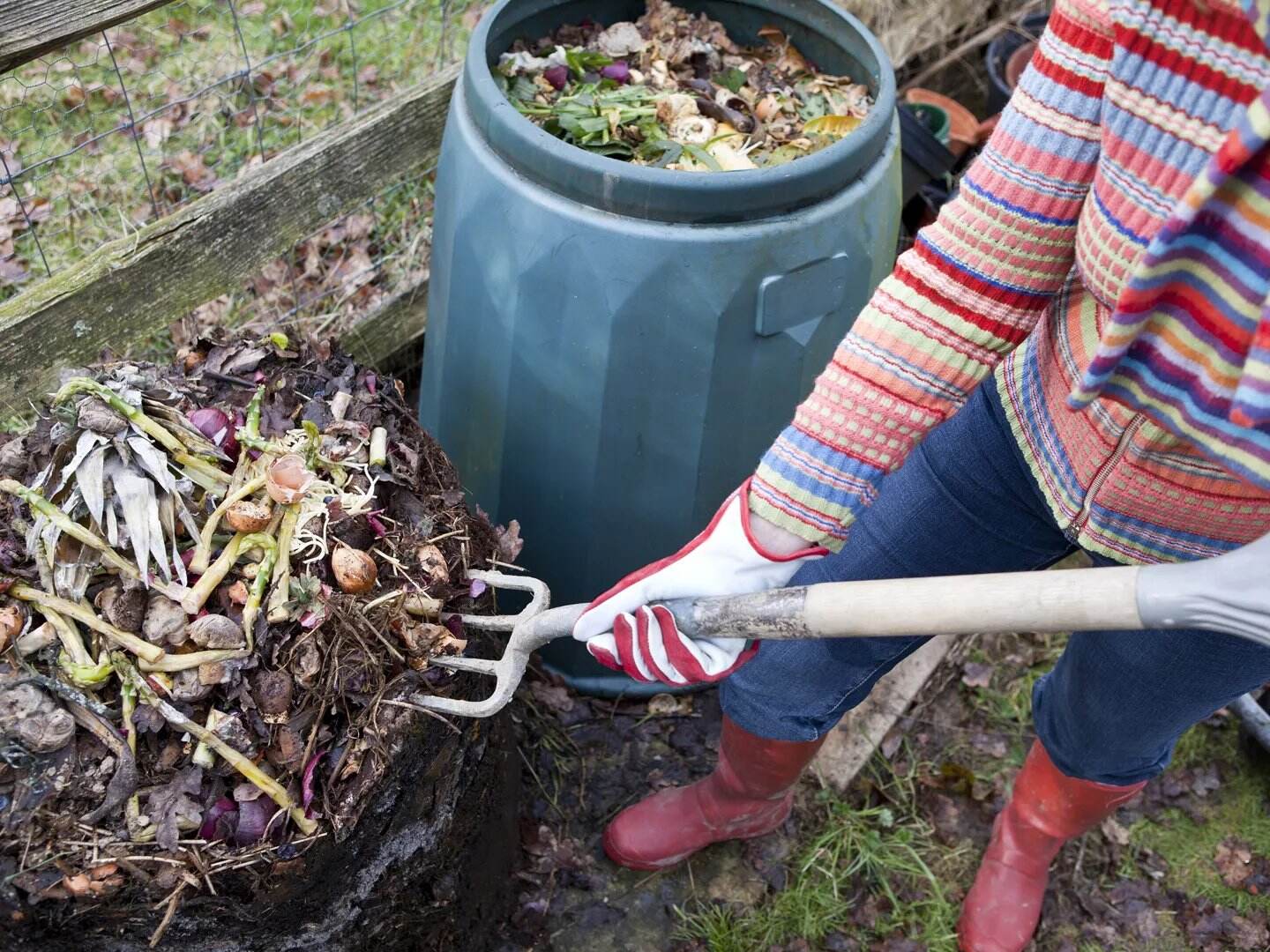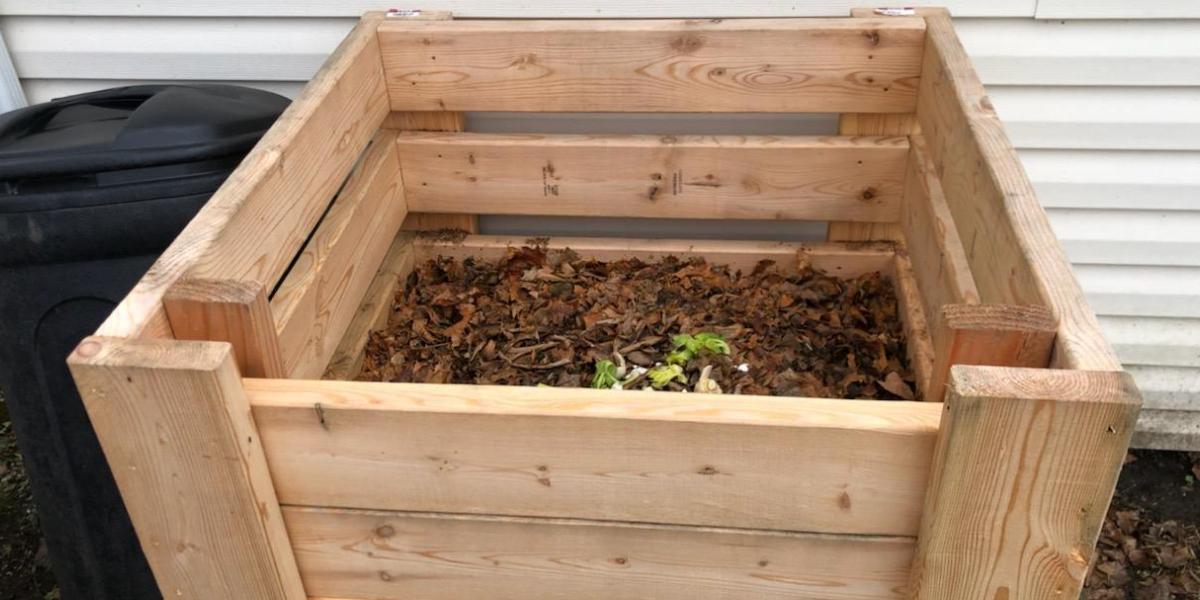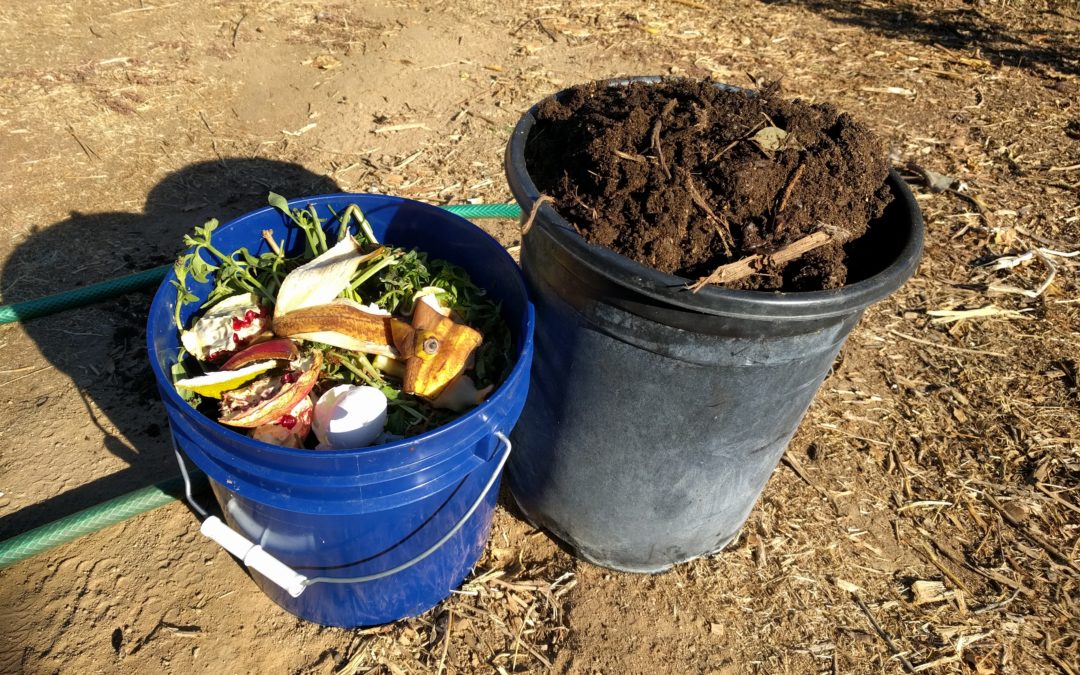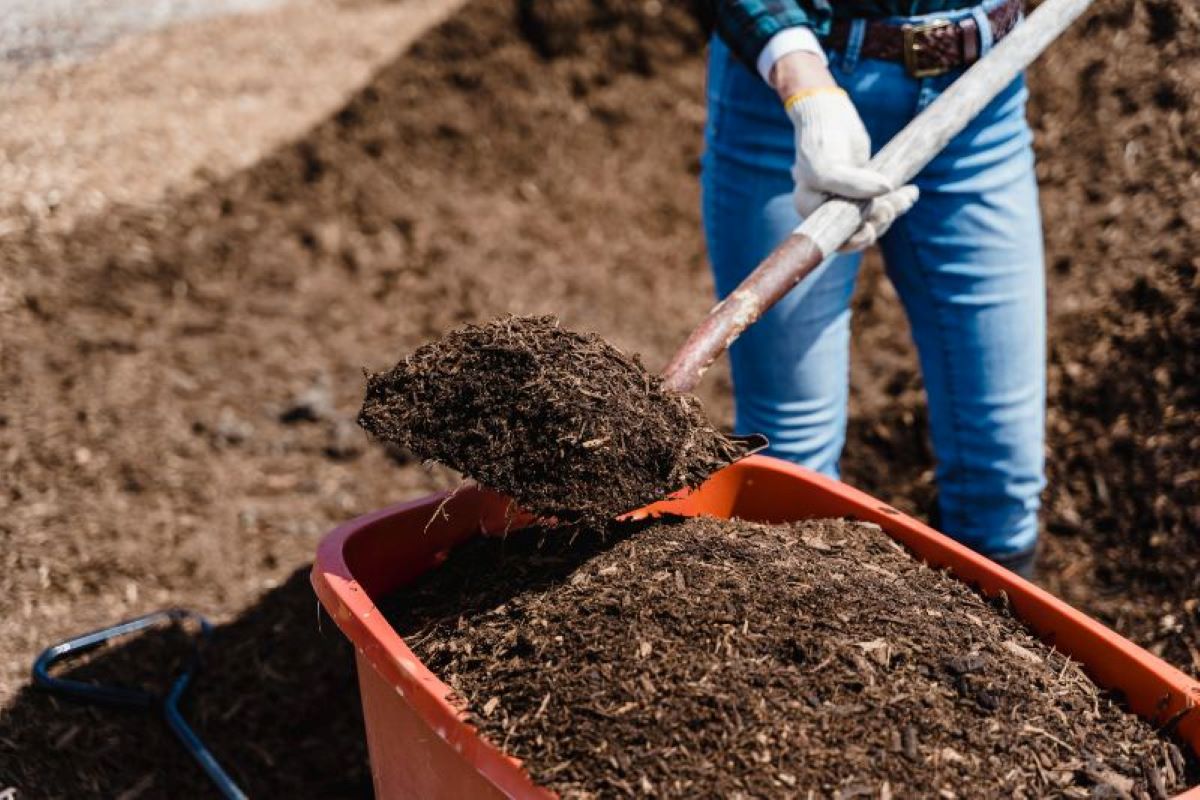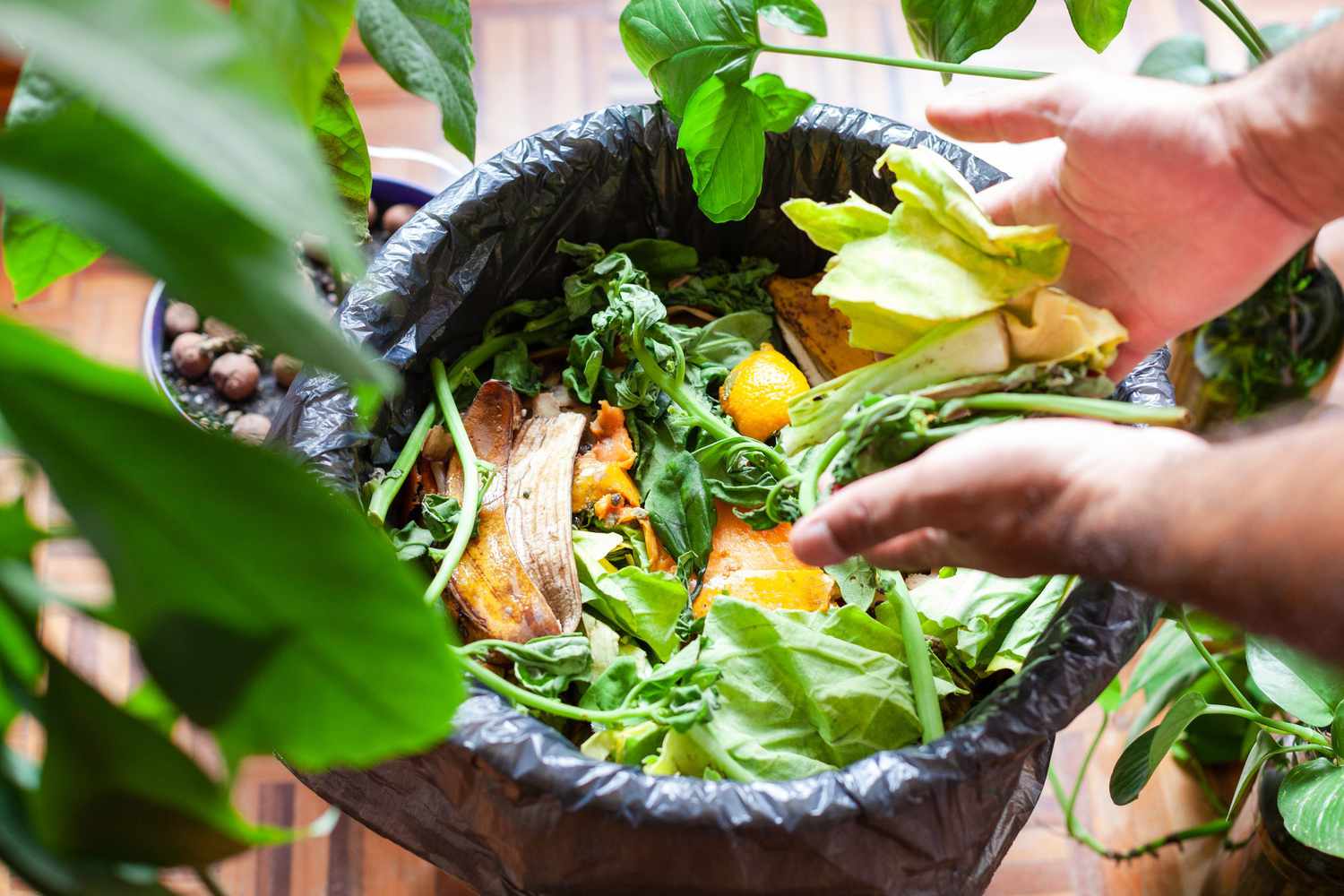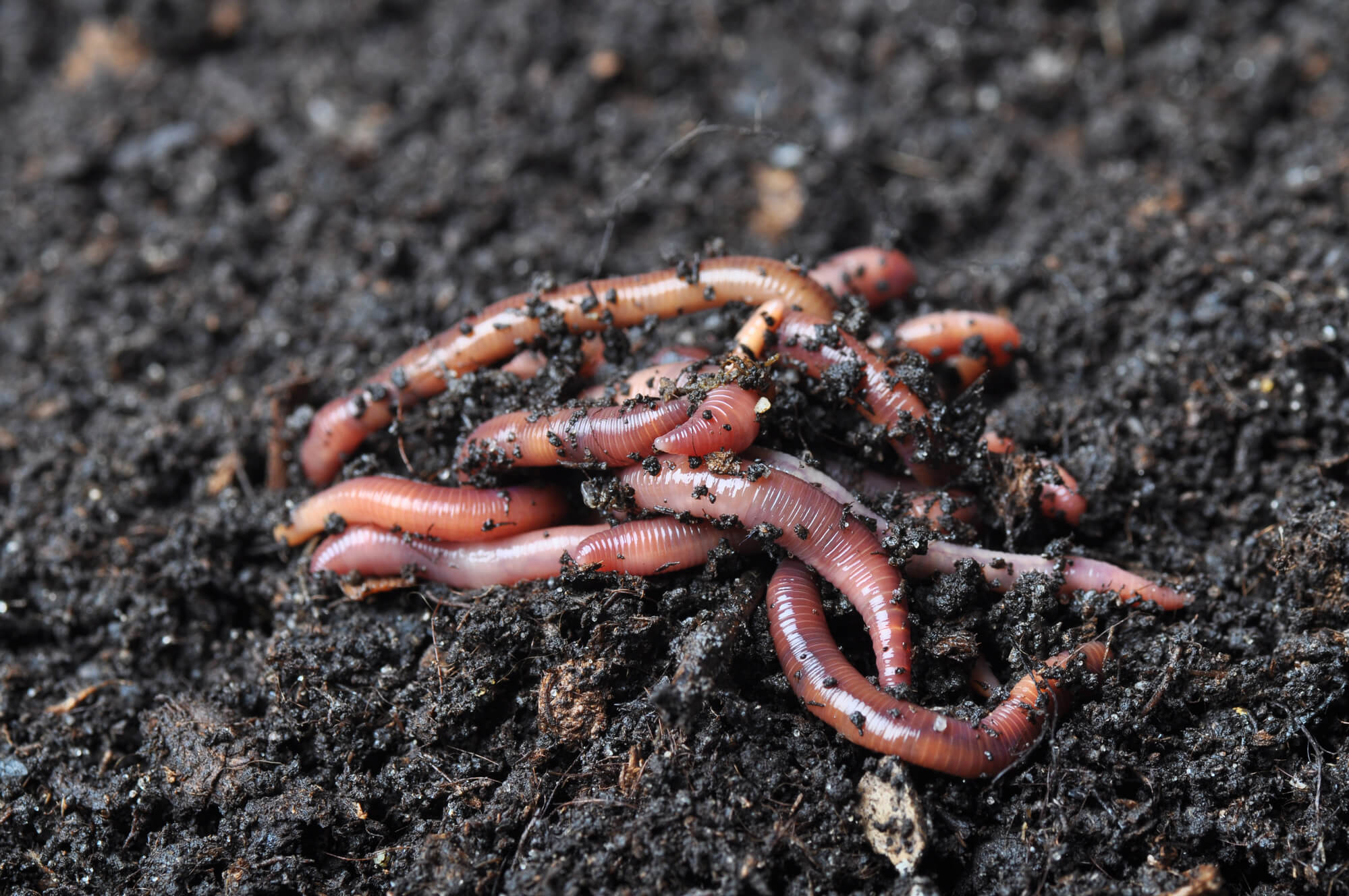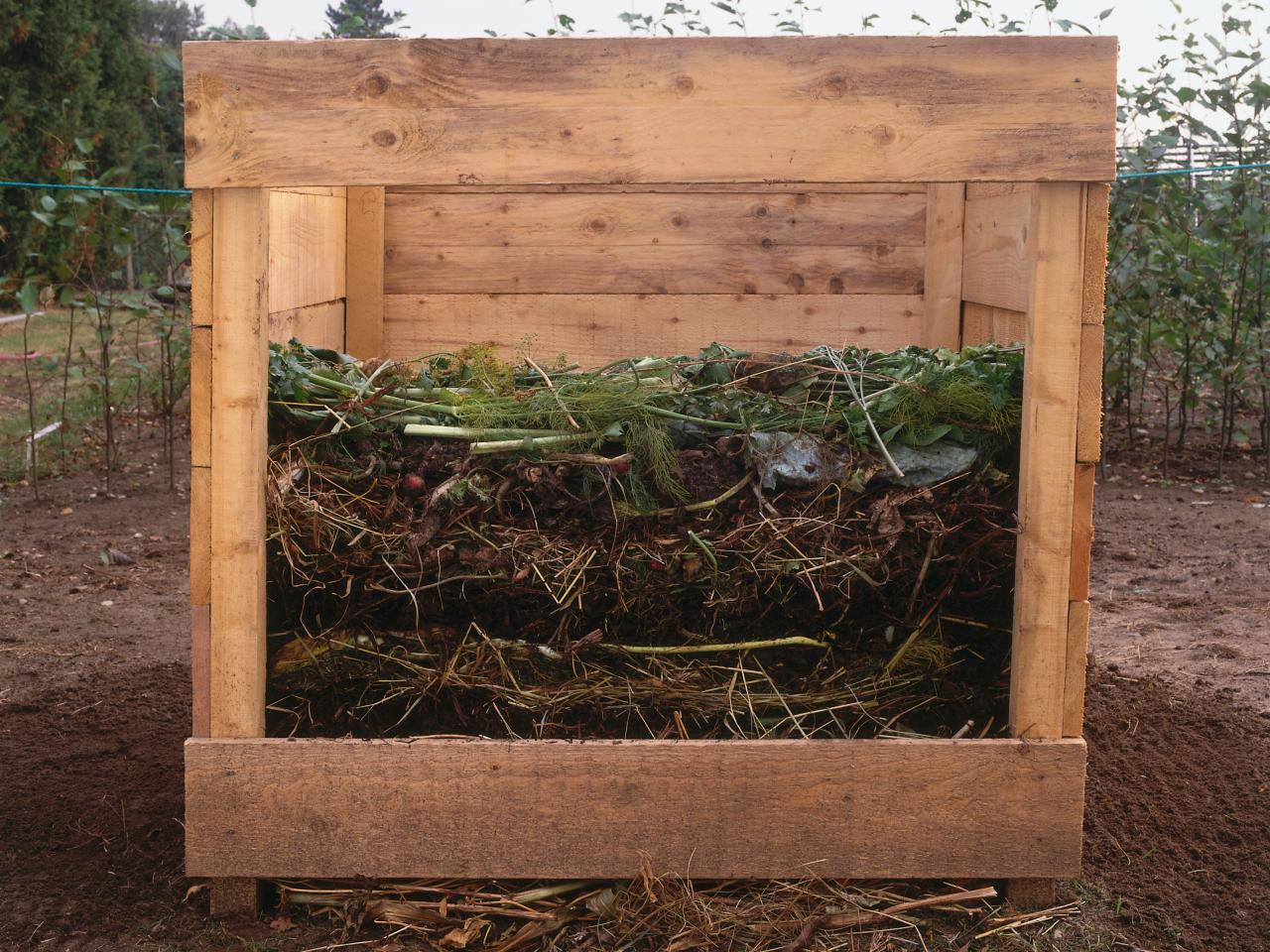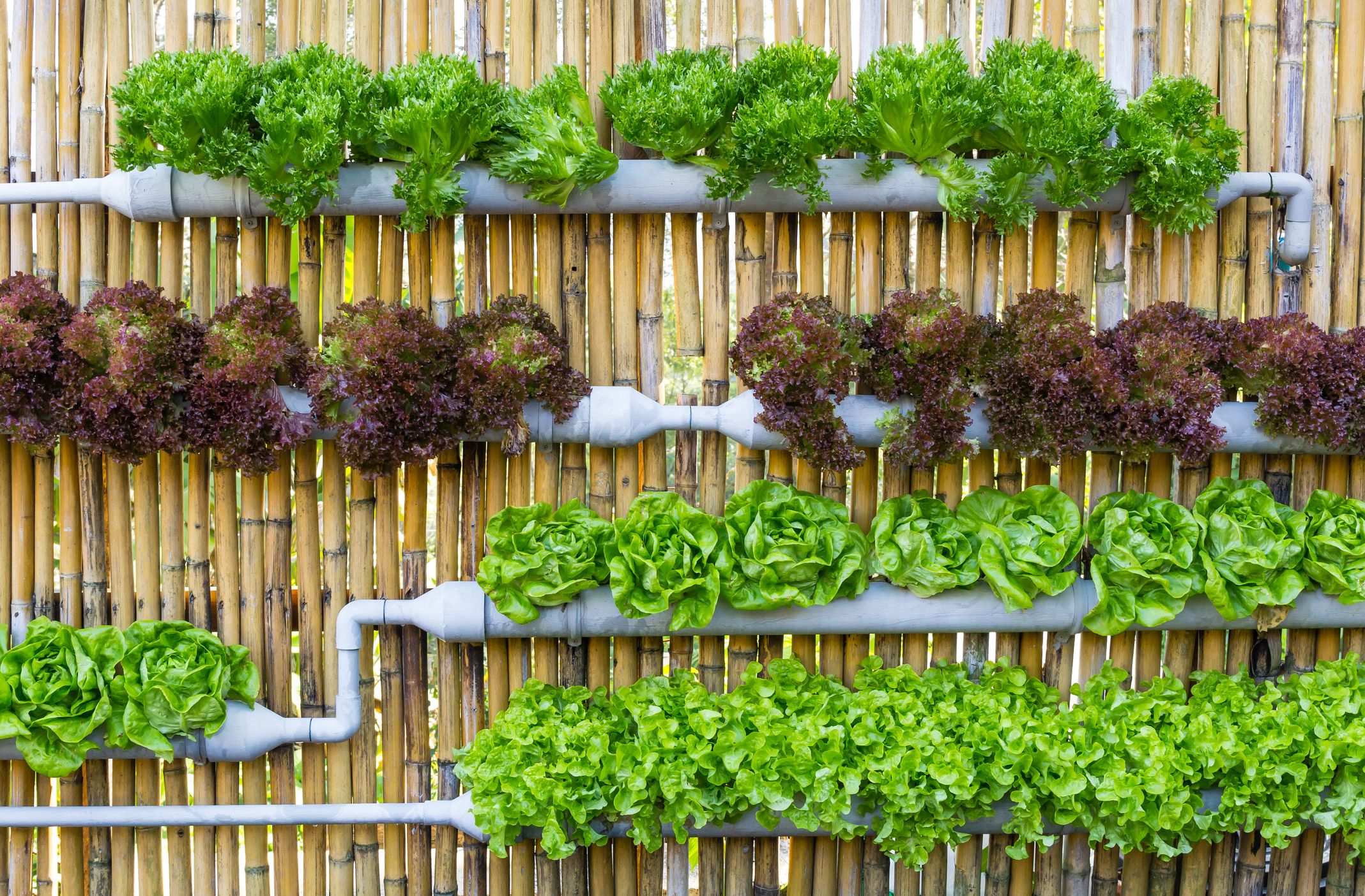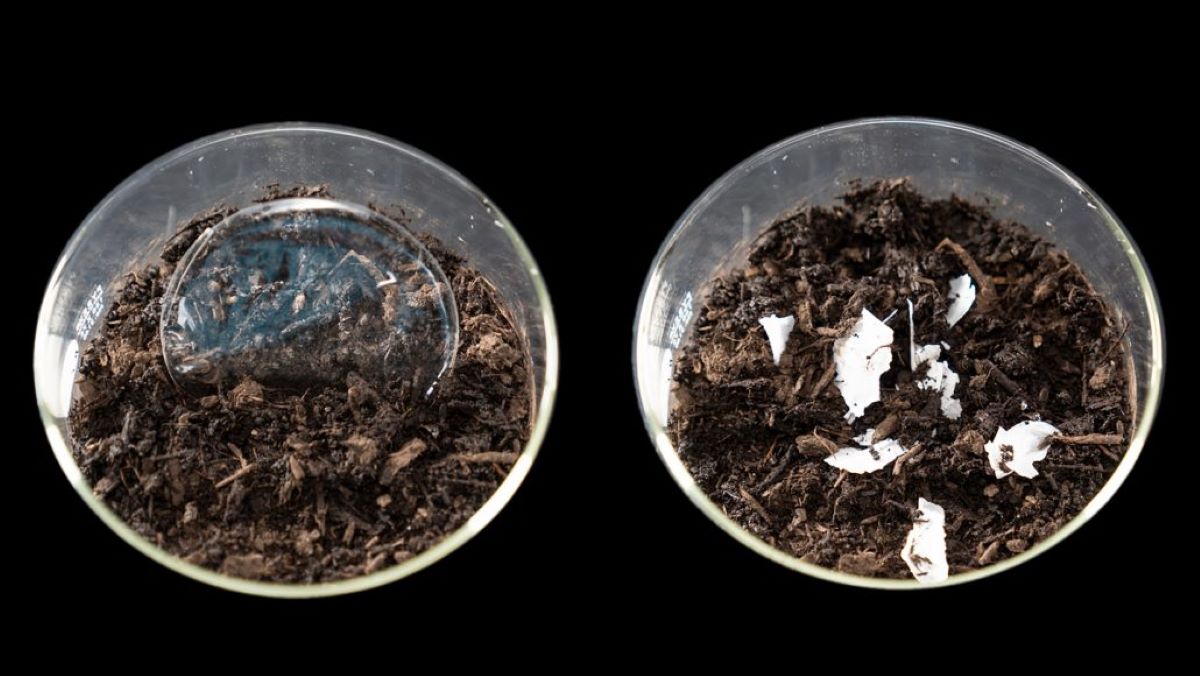Home>Gardening Techniques>DIY Projects>How To Make Bokashi Compost
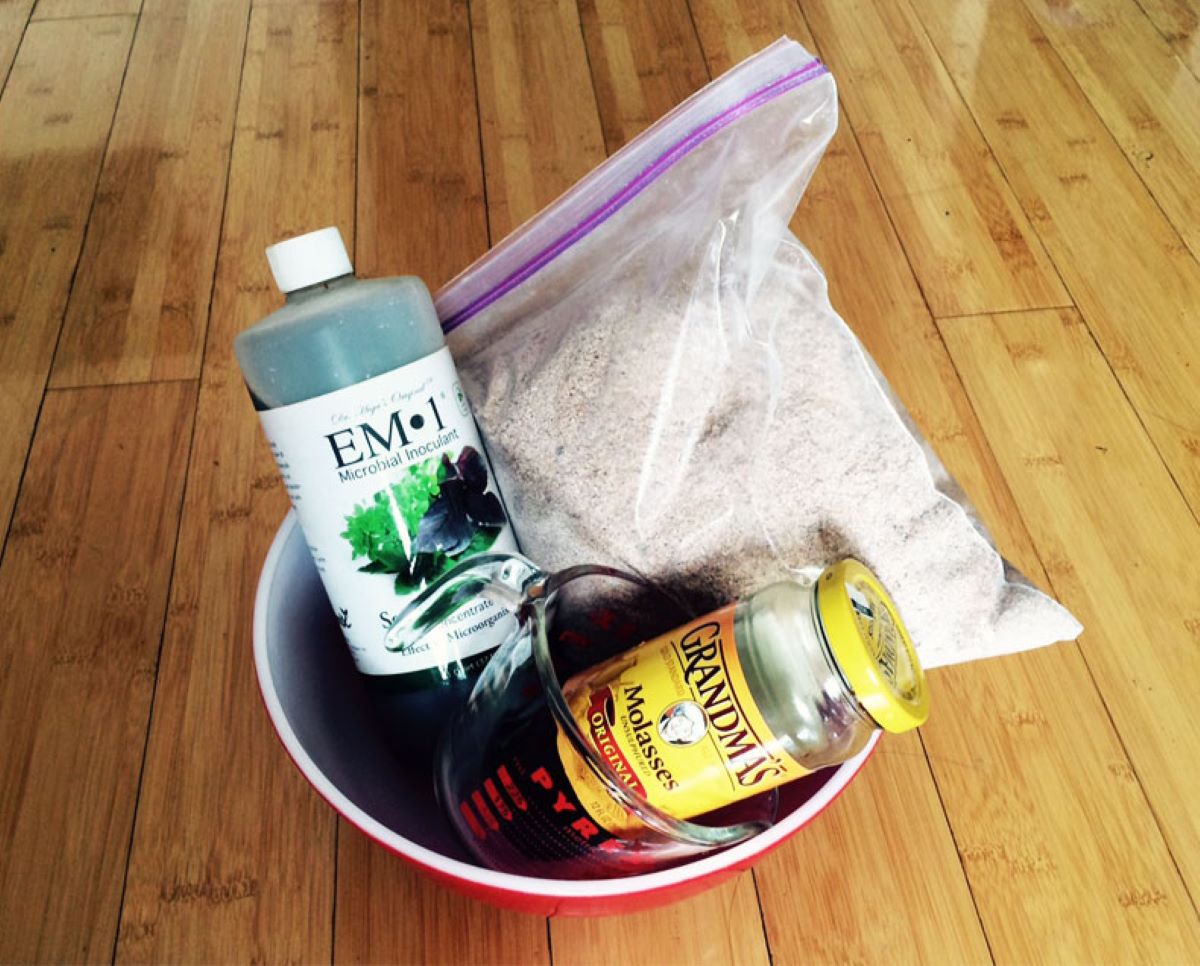

DIY Projects
How To Make Bokashi Compost
Modified: January 22, 2024
Learn how to make Bokashi compost at home with this easy DIY project. Transform your kitchen waste into rich, nutrient-filled soil with our step-by-step guide.
(Many of the links in this article redirect to a specific reviewed product. Your purchase of these products through affiliate links helps to generate commission for Chicagolandgardening.com, at no extra cost. Learn more)
Table of Contents
Introduction
Welcome to the world of bokashi composting! In this article, we will explore the fascinating process of bokashi composting, a unique and effective method of recycling organic waste. Whether you are a seasoned gardener looking to improve soil quality or a DIY enthusiast seeking an eco-friendly way to dispose of kitchen scraps, bokashi composting is an excellent option to consider.
Bokashi composting originates from Japan and has gained popularity worldwide due to its simplicity and impressive results. With bokashi composting, you can transform your food waste into nutrient-rich compost that promotes healthy plant growth and reduces landfill waste.
The process involves the use of a specialized bokashi composting system that relies on beneficial microorganisms to ferment organic materials. Unlike traditional composting methods, bokashi composting allows you to compost a wide range of food waste, including meat, dairy products, and cooked food scraps, which are typically problematic in other composting systems.
The bokashi composting process is odorless and compact, making it a perfect solution for small spaces such as apartments, balconies, or indoor gardens. Additionally, bokashi composting is a great option for those who do not have access to an outdoor compost pile or do not want to deal with the hassle of turning and maintaining a traditional compost heap.
In this article, we will provide step-by-step instructions for setting up your bokashi composting system, how to troubleshoot common issues, and best practices for using bokashi compost in your garden. Before we dive into the practical aspects of bokashi composting, let’s explore the numerous benefits it offers.
What is Bokashi Composting?
Bokashi composting is a method of composting that utilizes a fermentation process to break down organic waste. The word “bokashi” comes from a Japanese term meaning “fermented organic matter.” Unlike traditional composting, which relies on aerobic bacteria to decompose organic materials, bokashi composting harnesses the power of anaerobic bacteria to ferment and transform food waste.
The process begins with a bokashi composting system, typically a bucket or bin equipped with an airtight lid. This airtight environment creates the ideal conditions for anaerobic fermentation to occur. Inside the system, a special bokashi composting mixture, often made from bran or sawdust inoculated with effective microorganisms (EM), is used to kickstart the fermentation process.
When you add food waste to the bokashi composting system, you sprinkle a layer of the bokashi composting mixture on top. This layering process continues each time you add waste to the system. Over time, the microorganisms present in the bokashi composting mixture ferment the organic material, breaking it down into a nutrient-rich compost.
One of the key advantages of bokashi composting is its ability to compost a wide variety of organic waste, including meat, dairy products, and cooked foods that are typically not recommended for traditional compost piles. The fermentation process in a bokashi system creates an acidic environment that helps to neutralize odors and prevents the growth of putrefying bacteria, making it a more pleasant composting method for indoor use.
Another benefit of bokashi composting is its efficiency. The fermentation process is relatively fast, typically taking a few weeks to a couple of months to produce usable compost. This quick turnaround time makes bokashi composting an attractive option for those who want to reduce their waste and produce nutrient-rich compost to feed their plants in a shorter amount of time.
Furthermore, the resulting bokashi compost is highly concentrated with beneficial microorganisms, enzymes, and organic acids. These elements contribute to the overall health of the soil ecosystem, improving soil structure, enhancing nutrient availability, and promoting the growth of beneficial microbial communities.
Bokashi composting is a sustainable and eco-friendly solution for reducing food waste and improving soil health. In the following sections, we will delve into the benefits of bokashi composting and guide you through the process of setting up your own bokashi composting system.
The Benefits of Bokashi Composting
Bokashi composting offers a range of benefits that make it an attractive option for both inexperienced and seasoned gardeners. Let’s explore some of the key advantages of implementing bokashi composting in your sustainable gardening practices.
1. Versatile Acceptance of Organic Waste: Unlike traditional composting methods, bokashi composting allows you to compost a wide range of organic waste materials, including meat, dairy products, and cooked food scraps that are typically discouraged in regular compost piles. This means that virtually all of your kitchen waste can be effectively recycled, reducing the amount of waste that ends up in landfills.
2. Odorless and Compact: Bokashi composting is an odorless process, thanks to the anaerobic fermentation that takes place inside the airtight bokashi composting system. This makes it an ideal composting method for those living in apartments, since it does not produce any unpleasant smells. The compact size of the bokashi composting system also makes it suitable for small spaces, such as balconies or indoor gardens.
3. Speed and Efficiency: Bokashi composting is a relatively fast process, producing usable compost in a fraction of the time compared to traditional composting methods. The fermentation process typically takes a few weeks to a couple of months, depending on the conditions and materials used. This means you can start reaping the benefits of your compost sooner, providing your plants with a nutrient-rich soil amendment.
4. Rich in Beneficial Microorganisms: The fermentation process in bokashi composting results in a compost that is loaded with beneficial microorganisms, enzymes, and organic acids. These elements are essential for the health of your soil ecosystem, enhancing nutrient availability, improving soil structure, and promoting the growth of beneficial microbial communities. This, in turn, leads to healthier and more productive plants.
5. Improved Soil Fertility and Water Retention: Bokashi compost is a powerful soil amendment that enriches the soil with essential nutrients. It increases the organic matter content, which improves soil fertility and encourages better water retention. This is especially important in regions with dry climates or in areas where water conservation is a priority.
6. Reduces Greenhouse Gas Emissions: By diverting organic waste from landfills, bokashi composting helps reduce greenhouse gas emissions, particularly methane. Methane is a potent greenhouse gas that is released when organic waste decomposes in anaerobic conditions. By composting your food waste through bokashi composting, you are contributing to a more sustainable and eco-friendly environment.
As you can see, bokashi composting offers numerous benefits for your garden and the environment. If you are ready to get started with bokashi composting, continue reading to learn how to set up your own bokashi composting system.
Getting Started with Bokashi Composting
Now that you understand the benefits of bokashi composting, let’s dive into the steps for getting started with this effective and eco-friendly composting method.
1. Acquire a Bokashi Composting System: The first step is to obtain a bokashi composting system, which typically consists of a bucket or bin with an airtight lid. These systems can be purchased online or at gardening centers, or you can even make one yourself using a food-grade container and a tightly fitting lid.
2. Prepare Your Bokashi Composting Mix: Next, you will need to prepare the bokashi composting mix that will kickstart the fermentation process. The mix is usually made with bran or sawdust that has been inoculated with effective microorganisms (EM). You can purchase a pre-made bokashi composting mix or make your own by mixing bran or sawdust with EM liquid or EM powder.
3. Layer the Waste and Bokashi Composting Mix: Place a layer of the bokashi composting mix at the bottom of your bokashi composting system. Then, add your food waste on top, making sure to spread it out evenly. After adding each layer of waste, sprinkle another layer of the bokashi composting mix. Repeat this process until your container is full.
4. Seal and Store: Once you have added all the layers of food waste and bokashi composting mix, press it down firmly to eliminate any air pockets. Ensure that the lid of your bokashi composting system is tightly sealed to create an anaerobic environment. Store the container in a cool, dark place away from direct sunlight.
5. Drain the Liquid: As the fermentation process occurs, liquid known as “bokashi tea” will be produced. This liquid is rich in nutrients and beneficial microorganisms. To prevent the buildup of excess liquid, it’s important to drain the tea every few days. You can collect the bokashi tea in a separate container and dilute it with water to use as a liquid fertilizer for your plants.
6. Let It Ferment: Allow the bokashi composting system to ferment for about two weeks to a month, depending on the ambient temperature. During this time, the beneficial microorganisms present in the bokashi composting mix will break down the organic waste and transform it into nutrient-rich compost.
7. Bury or Add to a Traditional Compost Bin: Once the fermentation process is complete, the bokashi compost will still be acidic and not yet fully decomposed. To complete the composting process, you can bury the bokashi compost in your garden or add it to a traditional compost bin. Over time, the compost will continue to break down, and you can use it to nourish your plants and improve soil health.
Remember, bokashi composting is a continuous process, so while one batch is fermenting, you can start another batch in a separate bokashi composting system. By following these steps, you will be well on your way to harnessing the power of bokashi composting and creating nutrient-rich compost for your garden.
Step-by-step Instructions for Making Bokashi Compost
If you’re ready to dive into the world of bokashi composting and create your own nutrient-rich compost, follow these step-by-step instructions:
1. Set up Your Bokashi Composting System: Acquire a bokashi composting system, such as a bucket or bin with an airtight lid. Make sure it is clean and free from any residue or chemicals that could interfere with the fermentation process.
2. Prepare the Bokashi Composting Mix: You will need to prepare the bokashi composting mix, which consists of a carbon-rich base material (typically bran or sawdust) and effective microorganisms (EM). Combine the base material with EM liquid or EM powder according to the instructions provided.
3. Layer the Bokashi Composting Mix: Place a layer of the bokashi composting mix at the bottom of your bokashi composting system. This will provide a base for the fermentation process and introduce the beneficial microorganisms.
4. Add Food Waste: Begin adding your food waste to the bokashi composting system. This can include fruit and vegetable scraps, coffee grounds, tea leaves, bread, cooked food, meat, and dairy products. Chop or break down larger food items into smaller pieces to accelerate the composting process.
5. Sprinkle the Bokashi Composting Mix: After each layer of food waste, sprinkle a layer of the bokashi composting mix on top. Make sure to cover the food waste completely with the mix to evenly distribute the beneficial microorganisms.
6. Compress the Layers: Use a utensil or a dedicated tamper to compress the layers of food waste and bokashi composting mix. This helps to eliminate air pockets and ensures efficient fermentation.
7. Close and Seal: Once your bokashi composting system is full, close the lid tightly to create an airtight environment. This anaerobic condition is crucial for the fermentation process to take place.
8. Store and Ferment: Place the sealed bokashi composting system in a cool and dark location, away from direct sunlight. The ideal temperature for fermentation is between 64-77°F (18-25°C). Allow the fermentation process to take place for a minimum of two weeks, but it can extend up to a month.
9. Drain the Liquid: During the fermentation process, liquid known as “bokashi tea” is produced. Every few days, open the bokashi composting system and drain the tea. Dilute the tea with water and use it as a nutrient-rich liquid fertilizer for your plants.
10. Complete the Composting Process: After the fermentation period, the bokashi compost is ready to be aged and fully decomposed. You can bury it in your garden, create a compost pile, or add it to a traditional compost bin. Over time, the bokashi compost will continue to break down, adding valuable nutrients to your soil.
Following these step-by-step instructions will help you create high-quality bokashi compost, reducing your organic waste while nourishing your plants. Now that you have your bokashi composting system set up, let’s explore some common issues that may arise during the process and how to troubleshoot them.
Troubleshooting Common Issues
While bokashi composting is a relatively straightforward process, a few common issues may arise. Here are some troubleshooting tips to help you address these challenges:
1. Foul Odors: Bokashi composting is known for its lack of unpleasant odors. If you notice a foul smell coming from your bokashi composting system, it could be an indication of a few things. First, check if the lid is tightly sealed to maintain an anaerobic environment. Additionally, ensure that you are using the correct bokashi composting mix and that you are properly layering the waste and mix. If the odor persists, you can sprinkle a thin layer of baking soda or charcoal on top of the waste to help absorb any unpleasant smells.
2. Mold Growth: Mold growth on the surface of the bokashi compost is normal and generally harmless. However, if you notice an excessive amount of mold or if it has a foul smell, it could indicate that the bokashi composting system is too moist or that the food waste is not properly covered with the bokashi composting mix. Adjust the moisture level by adding more bokashi composting mix and make sure to fully cover the waste with each layer.
3. Slow Fermentation: The fermentation process in bokashi composting should typically take two weeks to a month. If you notice that the process is taking longer than usual, it could be due to temperature variations. Bokashi composting thrives in temperatures between 64-77°F (18-25°C). If your environment is colder, consider moving the bokashi composting system to a warmer location. Additionally, check the moisture level and adjust as necessary, as excessive moisture can slow down fermentation.
4. Excess Liquid: If you find that your bokashi composting system is producing an abundance of liquid, it could indicate that the waste is too wet. This can be caused by adding watery food waste or not draining the bokashi tea regularly. To address this issue, ensure that you drain the liquid every few days. You can also add absorbent materials like newspaper or extra bokashi composting mix to help absorb excess moisture.
5. Incomplete Fermentation: If your bokashi compost appears to be fermenting but is not fully broken down, it may require additional time. Factors such as temperature, waste consistency, and the effectiveness of the bokashi composting mix can affect fermentation time. To promote further decomposition, you can transfer the partially fermented bokashi compost to an outdoor compost pile or bury it in your garden. Over time, the compost will continue to break down and mature.
By addressing these common issues, you can ensure a successful bokashi composting process. Remember that each situation is unique, and it may take some trial and error to find the best approach for your specific circumstances. With patience and diligence, you will be able to troubleshoot and overcome any challenges that arise during your bokashi composting journey.
Using Bokashi Compost in Your Garden
Once your bokashi compost has completed the fermentation process and is fully decomposed, you can put its nutrient-rich goodness to work in your garden. Here are some tips for effectively using bokashi compost to enhance your plants and soil:
1. Incorporate into Garden Soil: Bokashi compost is a valuable soil amendment that improves soil fertility, structure, and water retention. Before planting, incorporate the bokashi compost into your garden soil by spreading a layer and gently mixing it in. This will introduce the beneficial microorganisms, organic matter, and nutrients into the soil, providing a perfect habitat for plant growth.
2. Top Dress Existing Plants: For established plants, you can top dress the bokashi compost around the base of the plants. Be sure to keep the compost away from direct contact with the stems to prevent any potential burning. The nutrients and beneficial microorganisms in the bokashi compost will gradually be absorbed by the plant roots, promoting healthy growth and increased resistance to pests and diseases.
3. Create Compost Tea: You can make compost tea by steeping a handful of bokashi compost in water for several days. The resulting liquid can be diluted and used as a foliar spray or poured directly onto the soil around your plants. Compost tea is a fantastic way to deliver a concentrated dose of nutrients and microorganisms to your plants, boosting their vitality and overall health.
4. Mulch with Bokashi Compost: Utilize bokashi compost as a mulch to cover the soil around your plants. This can help suppress weeds, conserve moisture, regulate soil temperature, and provide a continuous slow-release of nutrients. Apply a layer of bokashi compost around 2-3 inches thick, being careful not to mound it up against the plant stems.
5. Boost Seed Starting Mix: When starting seeds indoors, incorporate bokashi compost into your seed starting mix. The rich nutrients and beneficial organisms will provide an excellent medium for seedling development. Mix the bokashi compost with the seed starting mix at a ratio of 1 part compost to 3 parts seed starting mix.
6. Maintain a Bokashi Composting System: Keep your bokashi composting system active by continuously adding layers of food waste and bokashi composting mix. This ensures a constant supply of nutrient-rich compost for your garden. As you harvest the finished compost, replace it with fresh food waste and mix to maintain the fermentation process.
As you integrate bokashi compost into your garden, monitor the growth and health of your plants. Observe how they respond to the added nutrients and microorganisms. Over time, you will experience the benefits of bokashi composting in the form of thriving plants, improved soil quality, and a bountiful garden.
Now that you are familiar with using bokashi compost, let’s conclude by summarizing the key points and highlighting the numerous advantages of incorporating bokashi composting into your sustainable gardening practices.
Conclusion
Bokashi composting is a valuable and efficient method for recycling organic waste and enhancing garden productivity. By harnessing the power of beneficial microorganisms and anaerobic fermentation, bokashi composting allows you to transform your food scraps into nutrient-rich compost that promotes healthy plant growth and reduces landfill waste.
The benefits of bokashi composting are numerous. It accommodates a wide range of organic waste, including meat, dairy products, and cooked foods, which are typically unsuitable for traditional compost piles. Bokashi composting is odorless and compact, making it an ideal solution for small spaces and indoor composting. The fermentation process is relatively fast, providing usable compost in a shorter amount of time compared to traditional composting methods.
The resulting bokashi compost is packed with beneficial microorganisms, enzymes, and organic acids that improve soil fertility, structure, and water retention. By incorporating bokashi compost into your garden soil, you can enhance the health and productivity of your plants. Additionally, bokashi compost can be used as a top dressing, in compost tea, as mulch, or as an amendment for seed starting mixes.
While bokashi composting offers numerous advantages, it is important to troubleshoot common issues that may arise throughout the process. Foul odors, mold growth, slow fermentation, excess liquid, and incomplete decomposition can be addressed by adjusting moisture levels, following proper layering techniques, and ensuring an airtight environment.
Now that you have learned the ins and outs of bokashi composting, you are ready to embark on your own bokashi composting journey. Set up your bokashi composting system, layer your food waste and bokashi composting mix, and allow the beneficial microorganisms to work their magic. Soon enough, you will witness the transformation of your kitchen scraps into nutrient-rich compost that will nourish your plants and the environment.
By embracing bokashi composting, you are making a significant contribution to reducing waste, improving soil health, and promoting sustainable gardening practices. Start your bokashi composting adventure today and experience the rewards of creating your own nutrient-rich compost while minimizing your ecological footprint.
